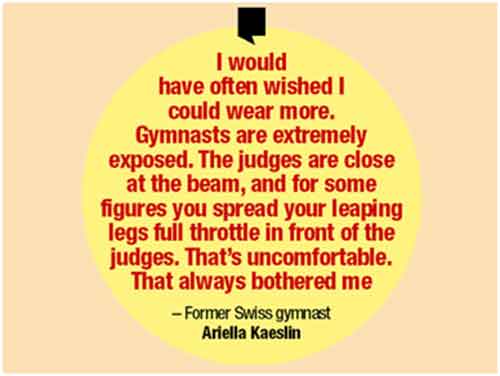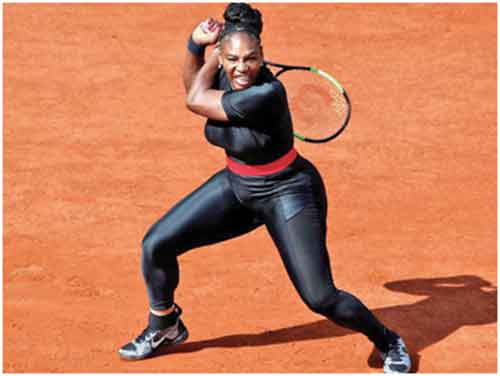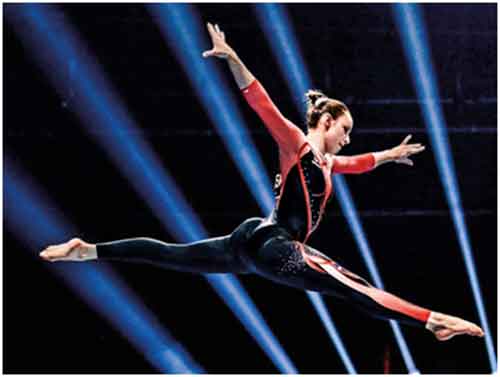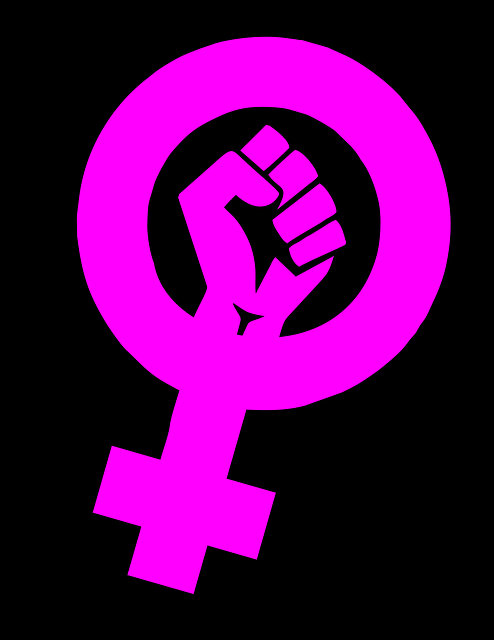
Bikinis are a mandatory part of female handball players’ dress code. In contrast, male players wear shorts. Similar sexist discrimination prevails almost in all events.
Helen Jefferson Lenskyj, a retired professor from the University of Toronto specializing in critiques of the Olympic industry and gender issues in sport, said: “There are sports where the overt sexualization of female bodies is really paramount — and gymnastics, beach volleyball and beach handball are among the top ones,” (Global News, July 26, 2021)
She said dress codes are dictated, to a large extent, by money and commercial interests. And the rules are made mostly by men who are in leadership positions in international federations… what we saw in the lead-up to the Tokyo Games is “depressing,” but not surprising.
Lenskyj said the rules and dress code in sport are discriminatory against women, as the same scrutiny does not apply to the men. Lenskyj believes the onus falls on both the IOC as well as the international federations.


Women typically wear leotards that show the entire leg. Unitards are technically permitted but usually worn for religious reasons.

Male gymnasts usually wear either slightly loose shorts or full-length leg coverings while performing, like China’s Zou Jingyuan at the 2019 World Artistic Gymnastics Championships.
Olivia Breen, Paralympian World Champion sprinter, was told by an official at the English Championships that her sprint briefs were “too short and inappropriate.”
“I was left speechless. I have been wearing the same sprint style briefs for many years and they are specifically designed for competing in. I will hopefully be wearing them in Tokyo. It made me question whether a male competitor would be similarly criticised,” says Olivia Breen, Paralympian World Champion sprinter, who was told by an official at the English Championships that her sprint briefs were “too short and inappropriate”
Pregnancy and dress code
In 2019, the French Tennis Federation president objected to the full-body catsuit worn by American tennis star Serena Williams (photo below) at the French Open, saying it will no longer be accepted at the tournament.

In 2018, catsuits were banned at Roland Garros, after Serena Williams wore a Black Panther-style one designed to help avoid blood clots post-pregnancy (photo above). French Tennis Federation president Bernard Giudicelli said: “One must respect the game and the place”. As a response of sorts, Williams won a US Open match in a hyper-feminine tutu soon after. Following the controversy, in 2019, the Women’s Tennis Association introduced a more ‘progressive’ dress code, allowing leggings and mid-thigh length compression shorts to be worn without a skirt or dress.
Several female golfers spoke against the inherent sexism of the rules in golf.
In 2017, LPGA (Ladies Professional Golf Association) released a (what many described as ‘slut-shame-y’) dress code, that included guidelines like “length of skirt, skort, and shorts must be long enough to not see your bottom area at any time, standing or bent over”. It added that “plunging necklines are not allowed.” Racerback shirts were allowed, but only with a collar. Several female golfers spoke against the inherent sexism of the rules.
At the same time, 2008 Olympic Individual All-Around Gold Medalist Nastia Liukin told a publication, “You aren’t allowed to (pick a wedgie) or else your points get deducted”. Points are deducted if your bra strap is out, she added.
The Code of Points also states the leotard leg length cannot exceed the horizontal line around the leg, delineated by no more than 2 cm below the base of the buttocks, forcing many gymnasts to glue their leotards to their skin.
In Gymnastics, Skimpy leotards are ok, bra strap or wedgies aren’t. Women typically wear leotards that show the entire leg.
***
“Don’t wanna show skin? Pay a fine & lose points!”
Kritika Kapoor wrote, Jul 24, 2021, in Times of India:
“ One would think that a dress code related to a sport would focus on the player’s comfort or their ability to play the game. And that might be the case, except if that player happens to be a woman – because then one also has to worry about other non-game-but-more-male-gaze-related matters like whether your uniform shows too much (or too less) skin, or if your bra strap is showing (a grave error that would cost female gymnasts points!), your hemline is too high and neckline too low, or if (god forbid!) the cut of your bikinis or leotards two centimetres off the mark!”

The Norway women’s beach handball team (photo above) was fined, on July 18, 1,500 euros (Rs 1.31 lakh, approx) for wearing shorts instead of bikinis at the European Beach Handball Championship.
Sportswomen of today are still navigating dress code conventions, but they are beginning to openly oppose them. Just this month, the Norwegian women’s beach handball team was fined for “improper clothing” during the European Championships in Bulgaria. This was because they were playing in shorts, as opposed to the required skimpy bikini bottoms, which should be “a close fit and cut on an upward angle toward the top of the leg” and have a maximum side width of 10cm, according to the 2014 International Handball Federation regulations.
Ironically, on the very same day, paralympic world champion Olivia Breen revealed that an official informed her that her “sprint briefs were too short and inappropriate” while she was competing in the long jump category at the English Championships, wrote Kritika.
According to the International Handball Federation rules, women “must wear bikini bottoms.” The bottoms must have “a close fit and cut on an upward angle toward the top of the leg,” the rules say, while the side width “must be of a maximum of 10 centimetres.” As for men, they are allowed to wear shorts that are “not too baggy,” as long as they remain 10 centimetres above the kneecap.
The men’s beach handball teams have always been permitted to wear shorts. After unsuccessfully petitioning to replace the bikini bottoms with shorts, the Norwegian women’s team took matters into their own hands when they reached the bronze medal game against Spain.
Despite being threatened with a fine or disqualification by the European Handball Federation, they opted to make a statement and wear thigh-length elastic shorts.
“ Women’s dress codes in sport are determined by “traditions” that are both outdated and gendered. Their outfits have long tried to reconcile notions of “femininity” with those of “athleticism”, but this process has turned women into objects to be admired rather than being valued for their sporting skills.”
Rachael Jefferson-Buchanan, Lecturer in Creative Arts, Charles Sturt University (26 Jul 2021) recalled history:
“ Where now the emphasis seems to be on revealing women’s bodies, the opposite was once the case. In the 19th century, when upper-middle-class women were eventually permitted to engage in games such as lawn tennis, their attire was suitably “feminine”, modest and designed to attract a potential husband rather than enhance their athleticism. Without doubt, their corsets and full-length dresses would have severely restricted their capacity to lunge and leap across the court in the way that today’s female tennis players do…”
There were similar dress code protests by female athletes at the European Artistic Gymnastics Championships in Switzerland this year. German gymnasts decided to take a stand against their sexualisation, donning full-body suits. It all began with Sarah Voss’s performance, which was promptly followed by two of her teammates.
Female athletes are taking a stand against sexist clothing rules
Female athletes are gradually rejecting outdated uniform regulations, which have a history of prioritising so-called feminine aesthetics over comfort.
Protests pave the way for female athletes to have more control over how their bodies are presented while competing.
However, there is recent rebellion in the ranks. Slowly, female athletes are pushing back on outdated uniform regulations and demanding that athleticism be prioritised over aesthetics.

Sarah Voss (photo above) and two other members of the German women’s team at the European Artistic Gymnastics Championships in Switzerland recently wore full-body unitards as a statement against ‘sexualisation in gymnastics’. Elisabeth Seitz, one of the gymnasts, said it was to “set an example to all gymnasts who may feel uncomfortable or even sexualised in normal suits”.
The decision to cover their entire body was a premeditated one. It received full support from the German federation (DTB), which advised that female athletes should always feel comfortable in their apparel.
German gymnasts decided to take a stand against their sexualisation, donning full-body suits at the European Artistic Gymnastics Championships.
Western Liberals criticize dress code or restrictions in Third world countries. It is painted as a question of democracy, individual choice, and human rights. But what is going on in Olympics and other sports events is brazen and shameless sexism.
It is part of imperialist culture, promoted by commercial interests and male chauvinism, and imposed in spite of opposition from women participants. And it is not talked about except by lone voices.
Are these democratic values to be cherished? Is not Modi-led India “cherishing these and sharing” these values?
India, promoted by big business and governments developed great craze for cricket. They relegated all other sports to a second or third rung. We have seen cricket is not enough; they needed half-clad cheer girls to sell tickets and media time.
The conservatives including those of Sangh parivar make lot of noise in India about such matters, talk of our traditions, punish individuals, but do not protest such vulgar practices and brazen dress code. They do not raise their voice against imperialists and business interests.
Progressives and Feminists in India also did not make an issue of it. Nor mainstream media raised it. In fact they relish and thrive selling such things.
See also by the same author: Smash Patriarchy, Brahmanical or otherwise (03/12/2018)
https://countercurrents.org/2018/12/smash-patriarchy-brahmanical-or-otherwise/
***
Ramakrishnan was a media person.















































